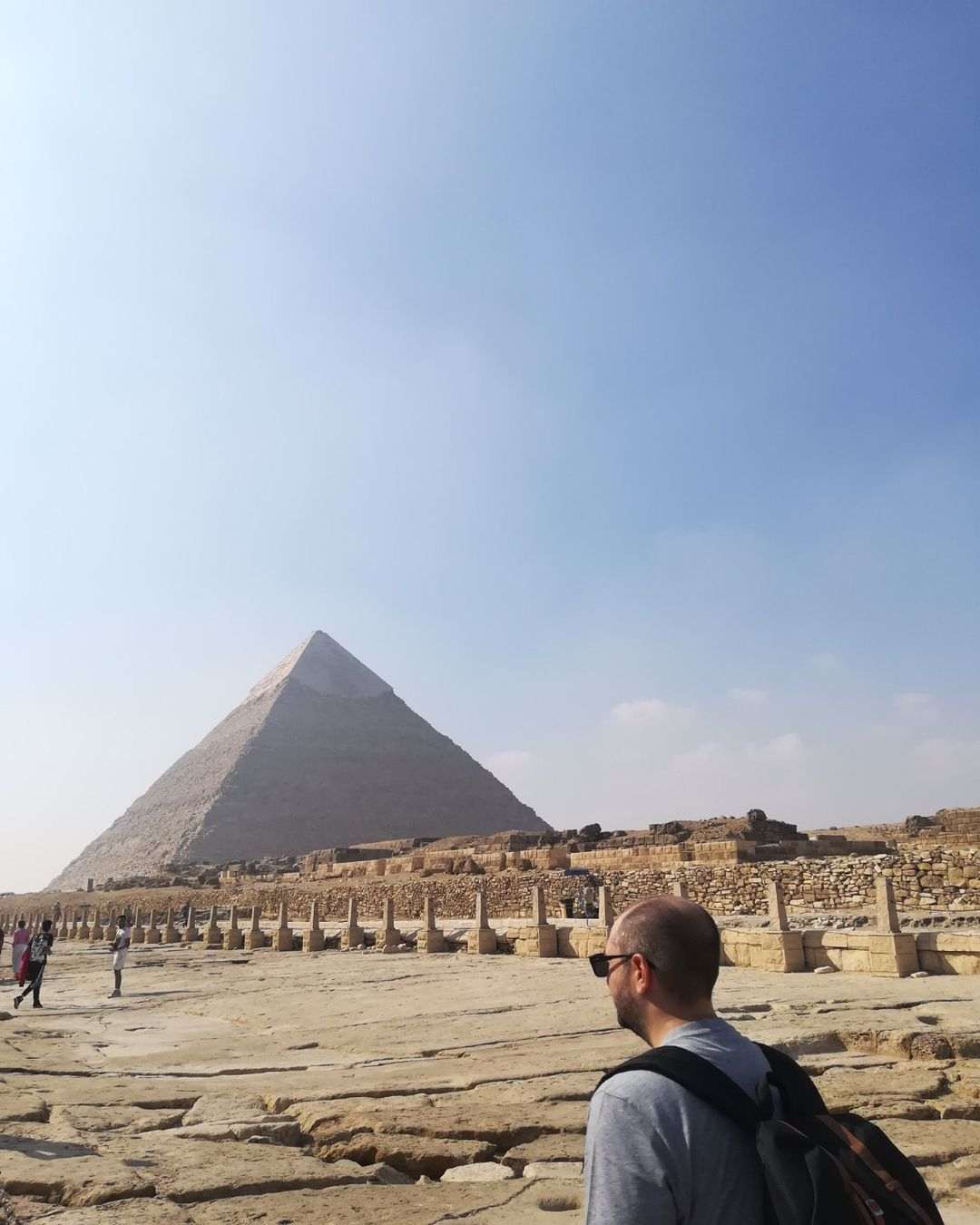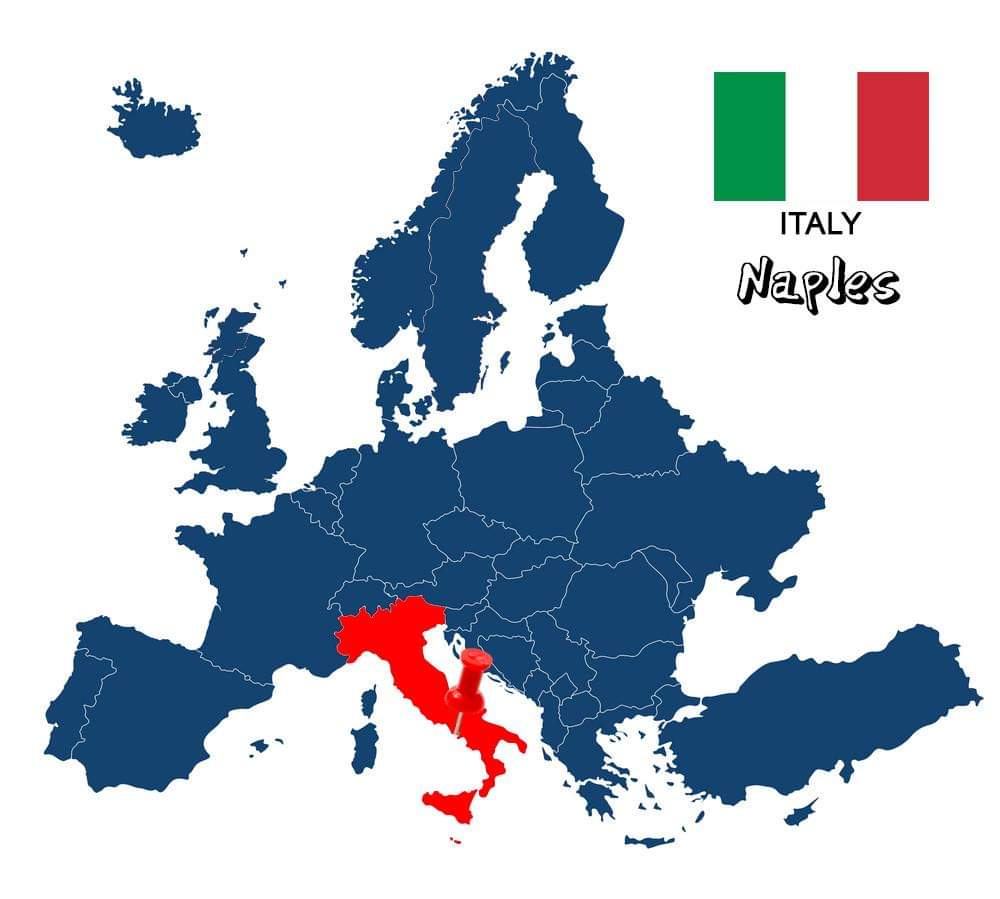
When I was younger, I had Italy in mind as a place where time has stopped. Pizza, motorbikes, people talking fast making various gestures and spreading laundry in narrow streets. Unfortunately, the reality is different from the movies, since most of the country is now moving at a more modern pace. But not Naples. Like a postcard, with unprecedented beauty, "different" aura and people friendlier than any other place I've ever been. You will either love or hate Naples, there is no intermediate situation. I of course belong to the first category, that’s why I have visited it twice and I will not rule out a third in the future.
A few words about the city
Naples is located in southern Italy and is the capital of the region of Campania and the homonymous province. Apart from having one of the most important ports in the country, is the third largest city in Italy, after Rome and Milan. The population of the homonymous municipality reaches 960,000 inhabitants, while in the wider metropolitan area of Naples it is estimated that they live between 4.1 and 4.9 million people! Naples is one of the oldest continuously inhabited cities in the world since the Bronze Age, while in the 2nd millennium B.C., Greek settlements were established at the site of the city, culminating in the re-establishment of the city as Neapolis in the 6th century BC, which later became the center of Great Greece. The historic center of the "city of the sun" is the largest in Europe, covering 17 sq. and is listed by UNESCO as a World Heritage Site. The bad reputation that accompanies Naples, mainly because of the mafia that operated there, but also because of the poverty that prevails in the Italian South, is only a rumor, since Naples is a safer city than Rome, Florence and Milan. So I have chosen for you what I think is worthy of attention for someone who is visiting the city for the first time.
Piazza del Plebiscito
The square of the Referendum is the largest Square in Naples and perhaps the one with the greatest tourist interest, since there are facing two of the most important sights of the city. On the one hand we find the extremely impressive Basilica di San Francesco di Paola. A neoclassical basilica, originally built (in the early 19th century) as a monument that would pay tribute to the Emperor Napoleon I. However, after the end of the Napoleonic Empire, the Bourbons took back the Kingdom of Naples, and in 1815 Fernandez I continued the construction and dedicated it to Saint Francis of Paola, who had stayed in a monastery that stood on this site in the 16th century. The work was completed in 1824, but the church was inaugurated only in 1836 by Pope Gregory II, who gave the church the title of Basilica, made it independent from the diocese of Naples, and gave the privilege, the sacred is turned towards the believers.
On the other side we meet Palazzo Reale, the royal palace of the city. This is one of the symbols of Spanish dominion in Naples, since it was one of the residences of the Bourbon. The construction of this building was started in the 17th century by the architect Domenico Fontana, intended to house King Philip III of Spain, which ultimately never took place. Outside you will admire the statues of all the rulers of the city since the establishment of the kingdom of Naples in chronological order, starting with Roger the Norman, and ending with Victor Emmanuel II. Inside you will find a rich collection of Baroque and neoclassical artifacts and objects, while the Royal Apartments also host the National Library of Naples with unique treasures, such as the 2000 papyrus discovered at Herculaneum. The entrance costs 6 €.
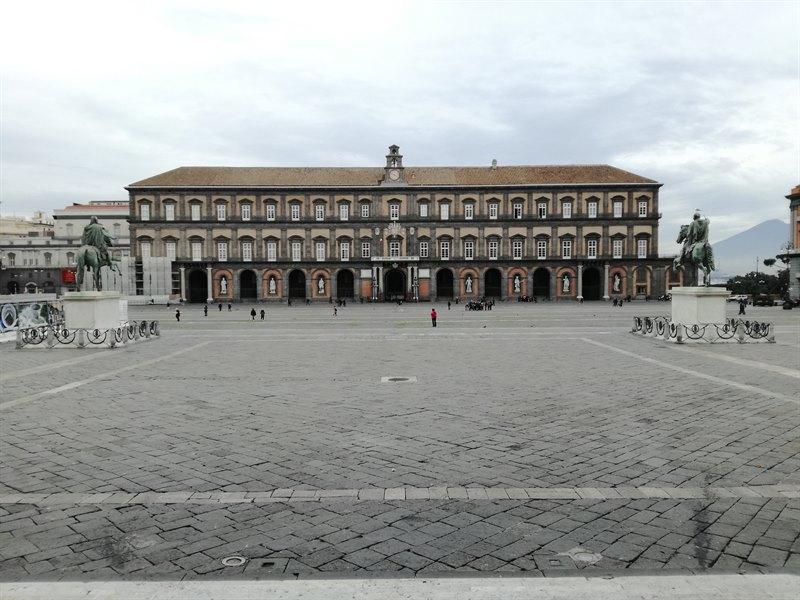
Spaccanapoli
One of the most beautiful, if not the most beautiful, parts of the city is the historic center of Naples, recorded by UNESCO as a World Heritage Site, known as Spaccanapoli. It is an area of at least 17km, which may be one of the most densely populated areas you will ever find in your life. Here you will stroll through the picturesque narrow streets with hanging clothes and discover the rhythms of the everyday life of the locals. Of course, Naples is also distinguished for its strong religious feeling, in fact it is said to be the city with most churches per square meter in the world and in the historical center are most of them. Those I believe are the most interesting are:
Monastero Santa Chiara is a monastery church dating back to 1310 and is the largest Gothic basilica in the city. The highly impressive mosaics on all columns, benches, windows and doves are what make it stand out from any other church. In 1943 it was almost completely destroyed by a fire, but any disaster was restored with great zeal to give the old details a fair return. The entrance costs 6 €.
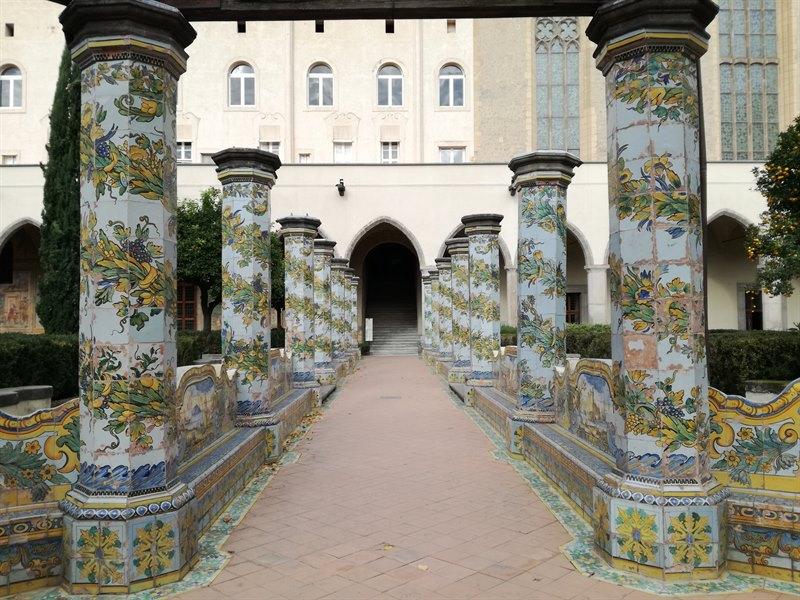
Right next to it is the Chiesa del Gesu Nuovo, the Church of the new Jesus. It’s a special church, built in rustic style with black bricks, depicting diamond projections. This is because it was originally built (1470) as a palace for Roberto Sanseverino, prince of Salerno, but then (1584) with several interventions was converted into a church, taking the place of the temple that existed there (old Jesus). In its impressive sanctuary, there is a place like a chapel dedicated to St. Joseph Moscati, a physician who was subsequently sanctified by the Catholic Church. The Neapolitans are so attached to this particular saint, who, through donations, created in 1990, a bronze statue of the real dimensions. The statue was placed to the left of the altar and so the faithful people worship and donate things for what concerns them.

Your wandering in the narrow streets full of people at all hours of the day, will surely lead you to San Gregorio Armeno Street and the homonym temple. This alley attracts many tourists in the pre-Christmas period, as there are hundreds of outdoor vendors with clay stores for the manger. Referring to the temple, it’s one of the most important baroque complexes in the city, built in 1574 on the ruins of another temple. Most notable throughout the church is a marble fountain in its center, decorated with dolphins and other marine creatures, with the statues of "Christ and the Samaritan" by Matteo Bottiglieri.
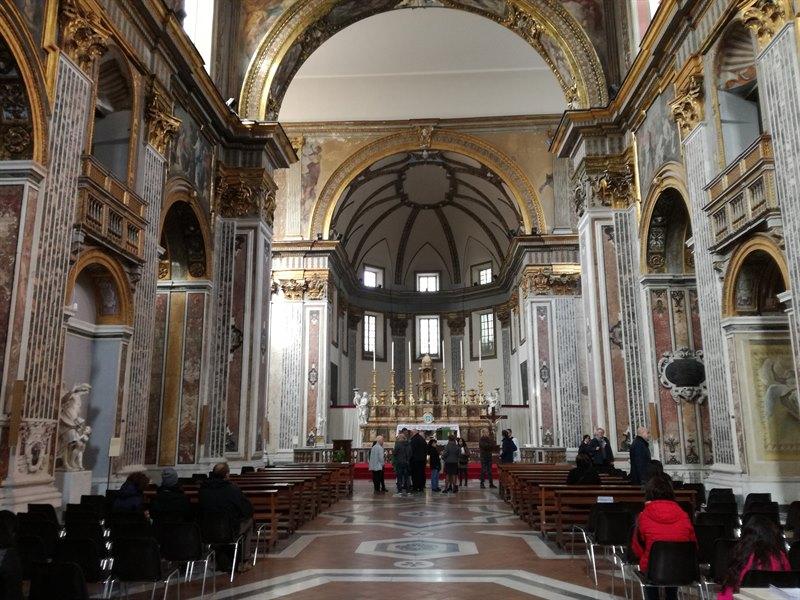
Finally, you could not miss the Duomo of the city, a cathedral dedicated to the patron saint of Naples, San Gennaro (Saint January). This church is extremely impressive and imposing, both externally and internally, being the seat of the Archbishop of Naples and essentially marking the center of the city. Its construction began in 1285 by King Charles I of Anjou and was completed in 1309 by his successor Charles II. The architecture and decoration of the interior will leave you speechless, as it contains about 3500 statues, other small and larger, magnificent frescoes, a very impressive dome and of course the beautiful sanctuary. Use the elevator to climb to the top, where you will see the unique view of the city from above.

Castel Nuovo
The medieval Castel Nuovo (New Castle) is located between Piazza Municipio (Town Hall Square) and Naples Beach. Its picturesque location and imposing size make the castle, erected in 1279, one of the city's main architectural attractions. Originally built as a royal residence and fortress of the dynasty of Anjou (Angevins), while there has also been an important centre of letters and arts, hosting great personalities of European culture such as Boccaccio, Petrarca and Giotto, who painted the frescoes of the historic Cappella Palatina. Today, the castle hosts a remarkable exhibition of Renaissance and Neapolitan painting (15th - 20th century). The entrance costs 4 €, but unfortunately there is no possibility to climb the towers to admire the view of the city.
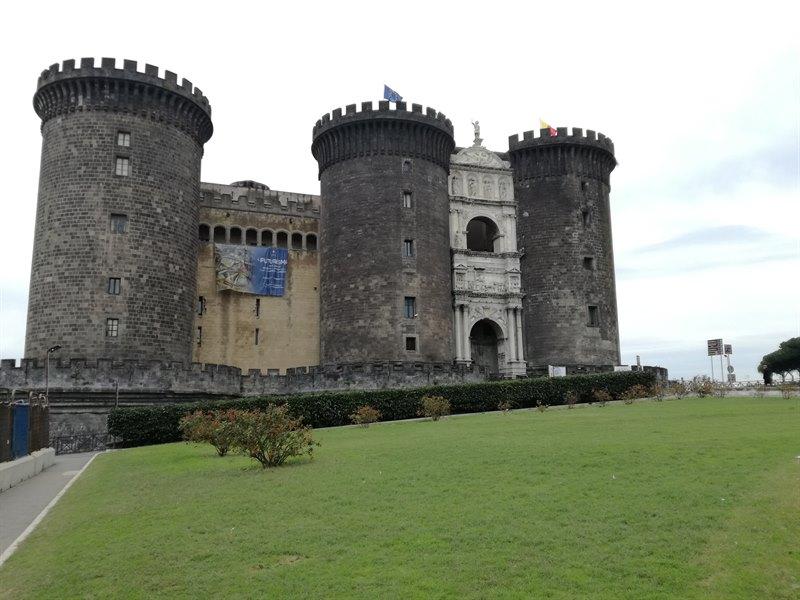
Castel dell’ Ovo
The second castle of the city, Castel dell’ Ovo (Egg Castle), was built by the Normans in the 12th century and is the oldest in Naples. Its name comes from a legend about the Roman poet Virgil, who had a reputation in the Middle Ages as a great magician, who predicts the future. In legend, Virgil laid a magic egg on the foundation to support fortifications. If the egg had been broken, the castle would have been destroyed and a series of catastrophic events would have taken place in Naples. So as long as the egg is safe, nothing bad will happen in the city. The entrance is free and from there you will have an awesome panoramic view of the city.
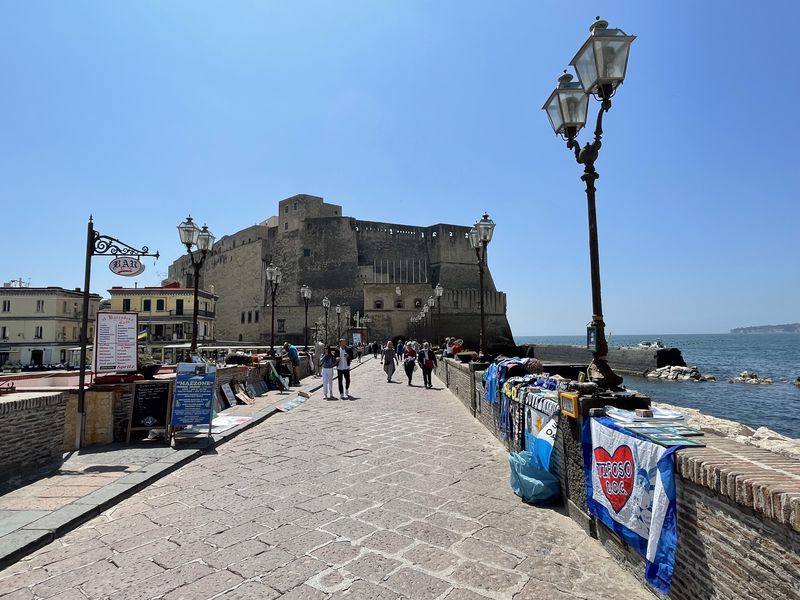
Castel Sant’ Elmo-Certosa e Museo di San Martino
Continuing with the castles, I will refer to Castel Sant ' Elmo. It’s located in the highest point of the city, on Vomero hill and if you want to reach it, you will need a cable car (funicolare). Certainly as a castle does not have the glamour of the two above, but the view will leave you satisfied. From the top you will be able to see Vesuvius, the port and all the sights of the city like small dots on the map. Personally, I was disillusioned with the view for hours. Its name derives from the church on which the present fortress was built in 1537. The entrance costs 5€ if you want to see the exhibitions inside, otherwise you can enter for free.
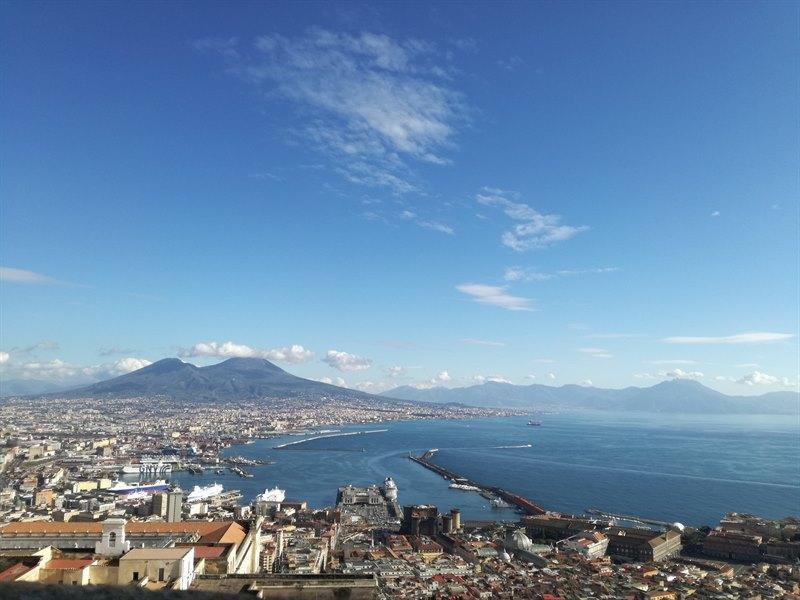
Right next door is the Certosa e Museo di San Martino, a former monastery that now functions as a museum. It is a Carthusian monastery, which was completed and inaugurated under the rule of Queen Joan I in 1368. It was dedicated to St. Martin of Tours, while in the first half of the 16th century expanded twice, until getting the structure we see today. In the early 19th century, under French rule, the monastery was closed and abandoned by the religious class. Today, the buildings host a museum with exhibits of Spanish and rocky islands, the Bourbon era, as well as pieces of the presepe-Nativity scene, considered to be among the best in the world. The entrance here costs 6€.
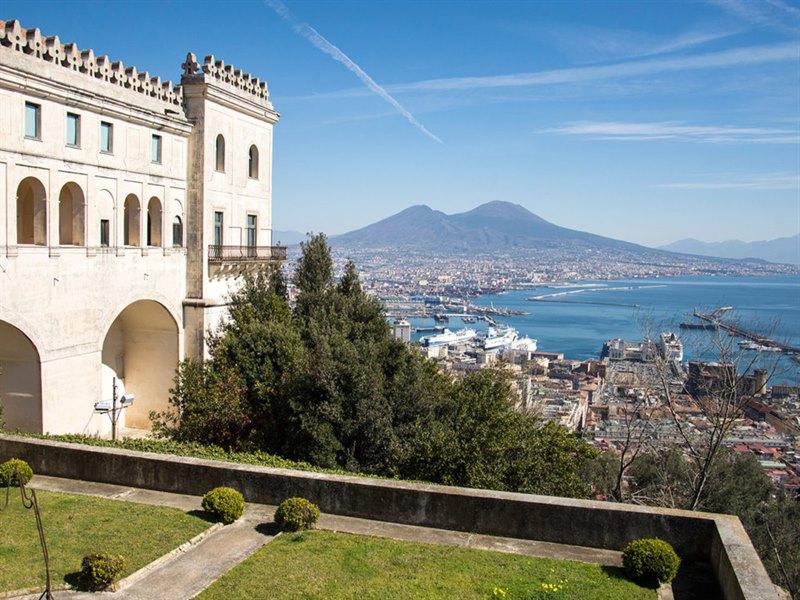
Museo Archeologico Nazionale
If you had to pick only one museum to visit in Naples, this would definitely be the Archaeological Museum. It is an 18th-century palace with a long history, where, from 1777, is located one of the most important museums of Greco-Roman antiquity in the world. There you will admire mainly exhibits from the excavations of Pompeii and Herculaneum, such as stunning mosaics and wall paintings, the fascinating Cabinetto Segreto (a special collection of ancient erotica sensual works), as well as a rare collection of Colossian Greek painters. The entrance costs 13€.
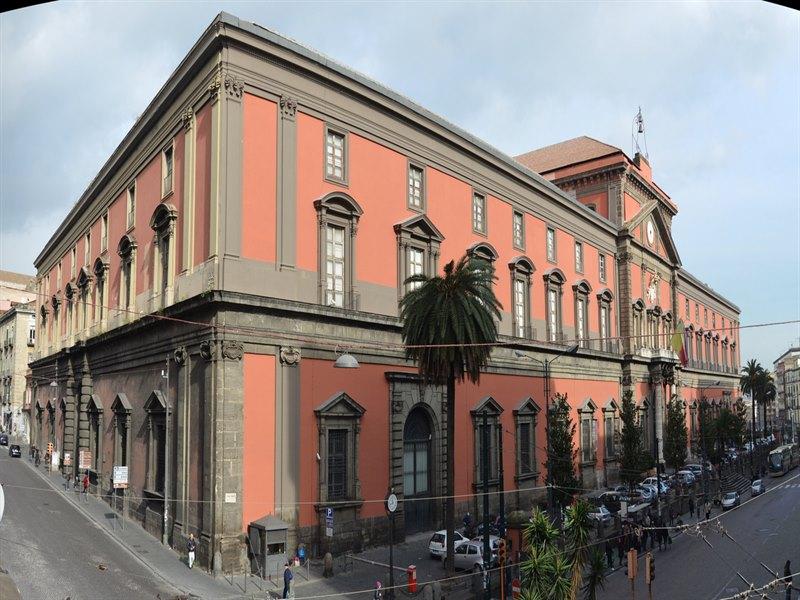
Museo e Real Bosco di Capodimonte
On another hill overlooking the bay of Naples is situated the palace of Capodimonte (1738) with the rich lush green gardens, which today houses the homonymous museum. It hosts priceless collections of European paintings of the House of Farnese, but also of the Bourbon dynasty. The collection is spread out in 160 rooms and covers the period from the 13th to the 19th century. Among other, you will admire masterpieces of Titiano, Rafael, Mazaccio, Botticelli, Bellini, El Greco, Caravaggio and Bregel. The entrance costs 12€.
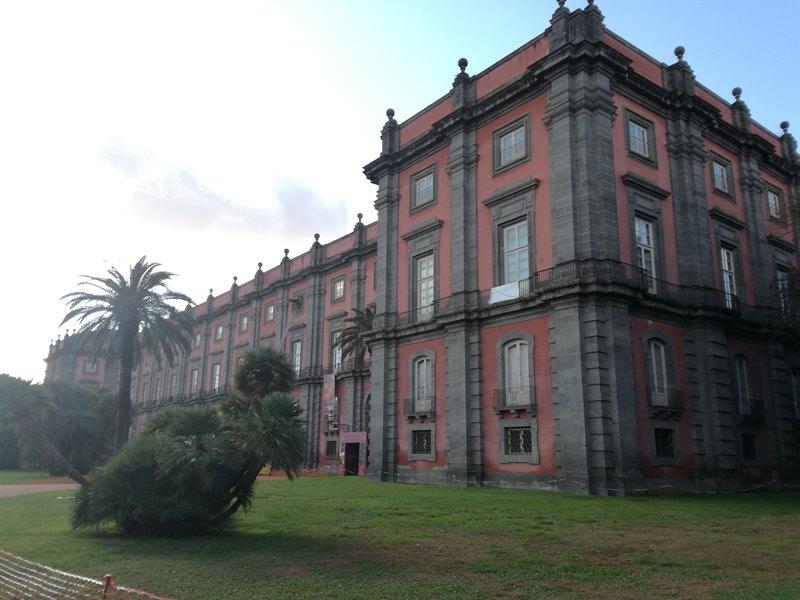
Galleria Umberto I-Teattro di San Carlo
The Galleria Umberto I is a covered shopping market in the city centre, built between 1887-1891 and inside are some of the most famous shops in Naples. For those who have visited Milan, it is particularly reminiscent of Galleria Vittorio Emanuele II, but in Naples this building was the cornerstone of the ten-year reconstruction of the city (risanamento), which lasted until World War I.
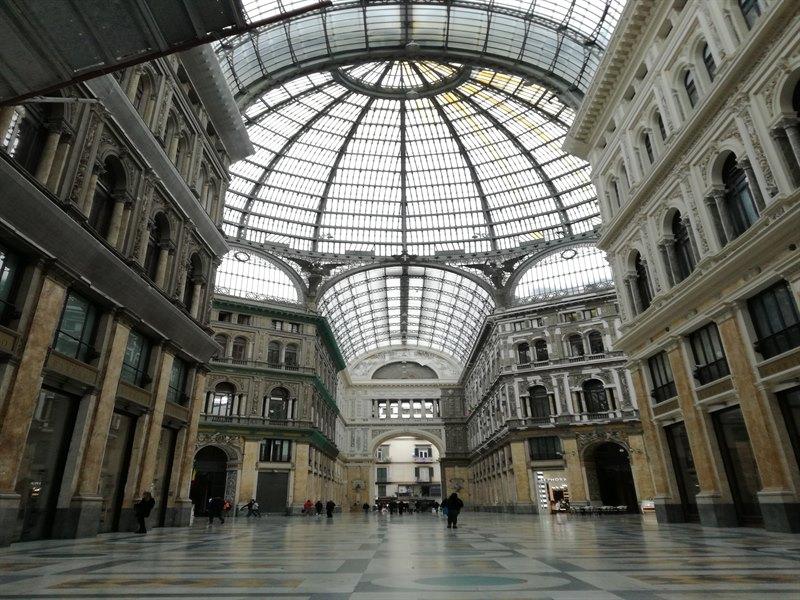
Right across the street is the oldest liturgical Theatre in Europe (1737), the Teattro di San Carlo. The exquisite frescoes on its vaulted ceiling, its gold-plated six-storeyed gallery and its perfect acoustics, making it one of the most important attractions of Italy. So if you are an opera lover, you shouldn’t miss visit it. The entrance costs 9€, while if you are lucky you may also get a performance.
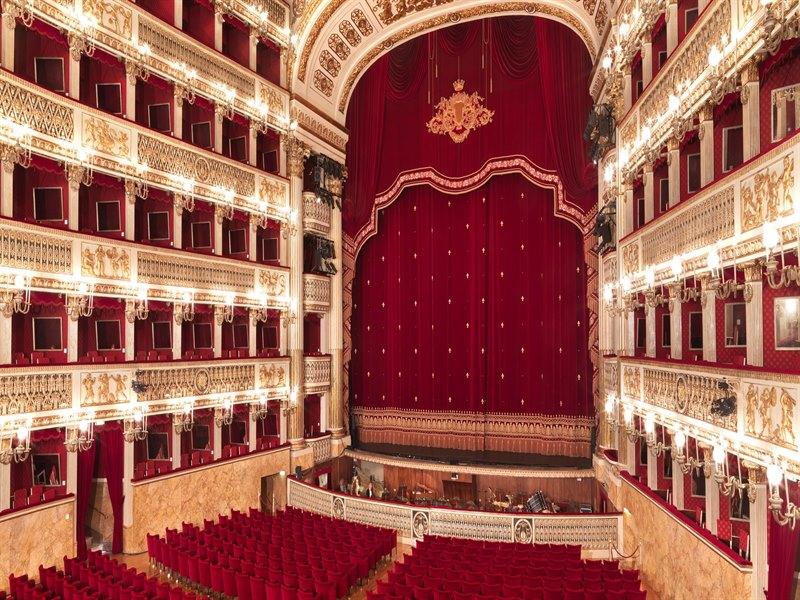
Napoli Sotterranea
The charm of Naples is not limited only to the surface of the Earth, but also under it, since few are those who know that there's essentially a second city beneath the city. In a mysterious maze of tunnels 40 feet below the streets of the historic center of Naples, you will discover roman aqueducts and tanks of the 16th century, a roman forum with intact facades of shops (1st century), the oldest early christian catacombs (2nd century) in Italy with exquisite frescoes and many other things that came to light, just in the last few decades.The entrance costs 10€ and includes a guided group tour. The tour is divided into two parts, the first exploring all of the above, holding a plastic candle to make the experience as realistic as possible, while in the second part you will be transported to the home of an elderly woman who had an ancient theater in her basement!!
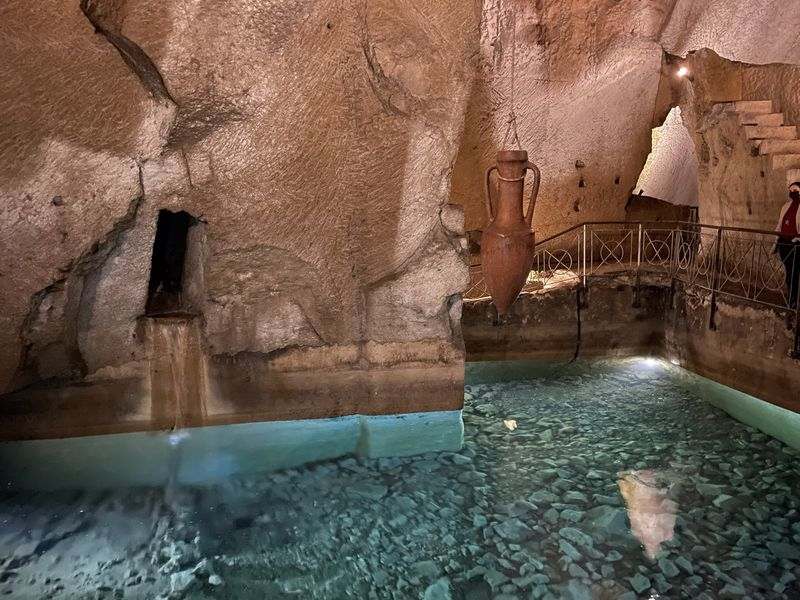
Mergellina
Mergellina is a coastal part of Naples, and it’s said that from there Vesuvius looks clearer than any other part of the city, which is probably true. The origin of the name is controversial, since some say that it comes from a bird called "mergoglino", while the other view says that it comes from "Mare Giallo" which means yellow sea, due to the floating tomb of rain, after a volcanic eruption many centuries ago. It is definitely worth walking along the sea with the backdrop of Mount Vesuvius, the Castel d'Ovo and the port of the city or sitting for lunch or coffee in the dozens of shops in the area.
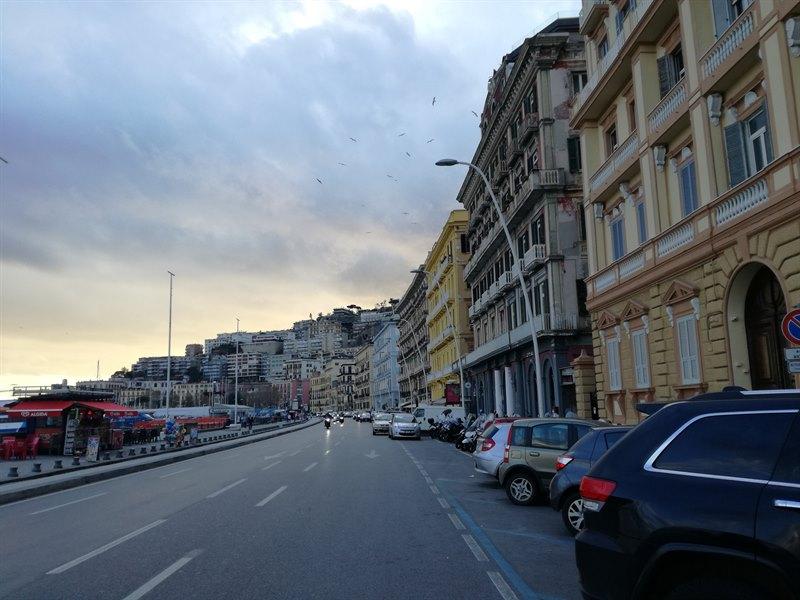
Pompei
It's incredible how a great disaster can bring eternity. This is what you think if you overcome the first shock and awe, facing the archaeological site of Pompeii and the imposing Mount Vesuvius in the background. The ancient city of Pompeii, built in the shadow of Mount Vesuvius, was completely destroyed by the eruption of the volcano in 79 AD. The lava covered everything and preserved the ruins of the city, making it the only city in the world that has remained unchanged since the Roman era, and not only the large public buildings but also the streets, houses, shops and even prostitutes (Lupanares). You will admire the enormous theater, where charity concerts have been performed by bands of our time, as it has awesome acoustics, impressive residences, fascinating preserved frescoes, a marketplace with genius antiquities and finally, different findings from household utensils to molds of people who died in the big bang. This may sound “cliché”, but this visit requires organization and preparation, as the place is huge and it takes at least 4 hours to see the basics! The entrance costs 20€. To get there, take the train line circumvesuviana from the main station Garibaldi (the ticket costs 3,5 €) and within half an hour, you'll be outside of the archaeological site.

How to go
Thessaloniki is connected by air to Naples and Aeroporto Internazionale di Napoli, via Ryanair. With proper planning one can find tickets starting from 24€ round trip! If you want a more comfortable flight, you can choose a flight with Lufthansa with a stopover in Munich, from 291€ round-trip. Finally, if you are in some other city of Italy is easy to reach Naples by train, as the train network in Italy is remarkable, and the tickets are highly affordable.
Where to stay
Naples is a very big city, which means plenty of accommodation. I would recommend avoiding areas far from the historic center or near the railway, where the risk is high. So my first suggestion is the Albergo del Golfo, a 3-star hotel, located in the heart of the historic center, very close to the metro stop and offering good value for money. My second suggestion is the B&B Rettifilo, a beautiful apartment on the main street of the city Corso Uberto I.
How to move
The best advice you can give to a person visiting Naples is not to use the car he has brought with him or to rent one. Traffic is unbelievable, there's a mess and you're wondering if there are any other driving rules in this town. Taxis are relatively cheap, but most of the time they get involved in traffic, while Italian taxi drivers don't have the best reputation for reliability. The same is true for buses and trams, which you may need to use in some cases. So the best way to travel is by underground, and of course I mean the subway. With Metro lines and suburban trains, you can move, easily and quickly, in every corner of the city. Finally, for Bommero Hill you will need the cable car as I mentioned above, which starts from three points in the city. The daily ticket for all means costs 3€, while the one-way 1.10€ for ninety minutes.
What to eat
Naples is the home of pizza, mozzarella di bufala and the genuine salsa di Napolitana from deep red tomatoes San Marzano of Campania or piennolo cherry tomatoes, grown on the slopes of Vesuvius. So you will try the most authentic (and exasperatingly cheap) version of Pizza vera Napolitana with two simple and basic varieties: margherita and marinara. The award-winning pizzerias you should definitely visit, are the "L'Antica Pizzeria da Michele", which has only these two pizzas on the menu and is said that there is created the margherita pizza and "Pizzeria Sorbillo", said to be the hangout of famous and has the most delicious pizza in the world (in these two the wait always exceeds one hour). Also good enough are the “Pizzeria Attanasio” and the “A Figlia Do Marenaro”, which you can taste seafood as well. If you had enough pizza and want to try something else, then I suggest you visit A 'Cucina Ra Casa Mia, located in the Quartieri Spagnoli and chosen mainly by locals. When it comes to sweets, do not hesitate to try a piece of Sfogliatella or Baba with rum in the wonderful patisseries of Galleria Umberto, have a coffee at the famous "Gran Caffe Gambrinus" in Piazza Plebiscito and eat agelato at Gelateria Valenti.
Useful information

In Italy we travel with a passport or a new type of Police Identity Card, where the information is written in Latin characters.
In Naples, the language used is, of course, Italian, but unlike other Italian cities, here English is not so prevalent, so if you don't know Italian, get ready to use every gesture that you have in your repertoire.
The currency of the country is the euro.
Naples is an hour behind Greece (GMT +2).
The Greek Wage Consulate General in Naples is located at Corso V. Emanuele , 86 and its telephone number is (0039081) 7612466.
The transition to and from the Naples Airport is simple, since there are continuous bus service (Alibus), the ticket costs 4€ and the bus transfer you in 20 minutes to the main train station and the port.
You may have heard that Naples is a very dangerous city, but that is not true. Of course, as in any major city, Naples is also dominated by wallets and petty cheats, so take care of your personal belongings.
If you have time and weather allows it, do not miss a trip to Vesuvius. There are dozens of tourist offices, both in Naples and Pompeii, that will take you there.
In summer and more specifically in July and August temperatures reach 40 degrees C and there is enough moisture. So the ideal time for sightseeing is the Autumn or Spring, while if you want to visit the beaches of the Amalfi Coast, then September is the ideal month.
Recommended excursions → Pompeii, Amalfi Coast (Sorrento)

If this article seemed interesting or contributed to your quality information, then you can like my facebook page: o_thessalonikios or follow me on instagram!
Mouzakidis Pantelis







